- Joined
- Jul 21, 2015
- Messages
- 1,131
I have a question for fellow Pricescopers:
Would a well cut, ideal colour, clean, approx. 1 ct (not Colombian) emerald be considered expensive at the price of 2k?
Not in the market for one, but I saw something and I not familiar with emerald prices at all, just wondering.
Ideal color is subjective, unless you know a great deal about emeralds. Don’t take a vendor’s word for ideal color unless they have a great reputation in the trade for emeralds, and they’re trustworthy. Then there’s treatment to consider.
An ideal color, clean, barely to no treatment, one carat emerald from the Muzo mine could be $10k or more. Larger carat sizes go up in price per carat.
Ok, I understand.
Found something similar in colour (slightly better) and clarity, but bigger (1.45ct), about the same price as the 1ct one.
I'm not in the market for one, but sometimes certain stones make me feel like they might be worth it because they are not the usual ebay/commercial quality and might not find something similar anytime soon.
Finding something slightly better in less than 10 min search is either luck or I've got a lot to learn about emeralds.
Probably the latter.
Thank you for your replies everyone!
I can’t really comment on the stones without seeing them and the lab report, but yes, it’s not that easy finding a great emerald for an inexpensive price.
1) it’s Zambian, so not as much of a premium as a top Muzo stone.This is the better stone I was talking about:
https://www.luxedogems.com/shop-gemstones-jewels/emerald-cushion-cut-1-45-ct/https://www.luxedogems.com/shop-gemstones-jewels/emerald-cushion-cut-1-45-ct/
I think it's stunning.
Unfortunatelly not for me at the moment.
Thanks for the info.1) it’s Zambian, so not as much of a premium as a top Muzo stone.
2). It’s medium toned. The finest emeralds are Muzo stone with a dark velvety slightly bluish green color.
3) i don’t care for in house lab reports. It would need an AGL, GIA, GRS or SSEF report with the amount and type of clarity.
4) I’m not crazy about the cut
However, it’s a pretty emerald, but I’m not blown away by it. I think the price is fair, but that proper lab report is essential.
Thanks for the info.
I thought the medium colour is ideal, not dark. Anyway, I have much to learn.
The other stone was blue-er, octagon cut.
No, in emeralds, dark tone, sometimes referred to as “duck neck” green (ever see a make mallard duck neck?), are highest prized, and the best of these come from the Muzo mine of Colombia.
I saw the smaller octagon cut, that was more included, but it definitely had that Colombian color. The Zambians look more tourmaline like to me.
Here’s an example of a Muzo “duck neck”’emerald. In person, they have a gorgeous satin sheen unlike anything else, it’s almost metallic looking. Notice the darker tone. Videos or photos don’t do them justice.
https://www.instagram.com/p/BzggasaDQBF/?igshid=xlvon17770ww
I've heard it said that Egyptian emerald was actually what is known today as peridot.
According to one of the slides on the first slide show...Not sure about that but who knows, with the spinel/ruby mixup too.
Found an interesting article on it which says not much was used in Egypt but mostly exported elsewhere or brought elsewhere.
https://www.google.com/amp/s/flight...0/the-gold-and-emeralds-of-ancient-egypt/amp/
The mines are still present but not viable for commercial mining so I think with today's tech they can differentiate both stones
Just very, very curious to see what tone/hue/green/clarity they are compared with the finds of today about the world!
Doubtless there were some green beryl, but the word in ancient times was also used for peridot and green feldspar.Amazonite like this is what some Egyptian “emeralds” actually are. It’s a green type of feldspar, not green beryl.
Not sure about that but who knows, with the spinel/ruby mixup too.
Found an interesting article on it which says not much was used in Egypt but mostly exported elsewhere or brought elsewhere.
https://www.google.com/amp/s/flight...0/the-gold-and-emeralds-of-ancient-egypt/amp/
The mines are still present but not viable for commercial mining so I think with today's tech they can differentiate both stones
Just very, very curious to see what tone/hue/green/clarity they are compared with the finds of today about the world!
Mindat has some photos of rough emeralds in the host rock from Egypt here:
https://www.mindat.org/gallery.php?...ywords=&orderxby=0&submit_pager=Filter+Search
They are all rather pale and pretty opaque, so nowhere near the quality of emeralds from Colombia, Zambia, Afghanistan, Russia etc.
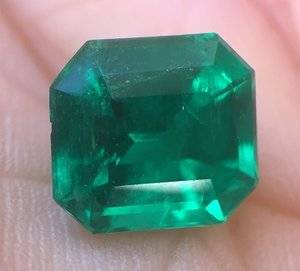
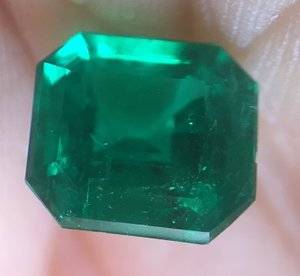
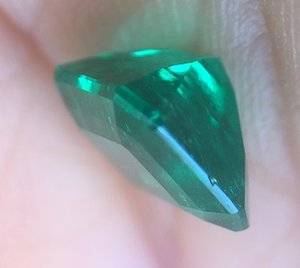
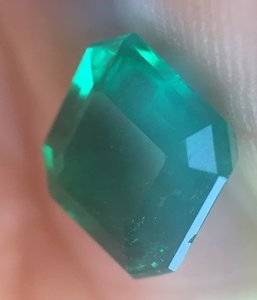
George paid majority of the AGL cost, and there is no mentioning that I will be charged with the AGL cost should I return it.Are you out the cost of the AGL if you return it? Also, the fracture along the top of the stone, in the top image, is that internal, or reaching through to the table?
I tried the method using a flash light and I looked though the loupe. I was trying to look for uneven surface, changes in light reflection, or just anything that would caught my attention. I did not see anything abnormal at the surface.You would have to look at the surface with a light shining on it and reflecting off the surface, and a loupe or decent MagnifyGlass to see surface reaching fractures. There should be none along the table. It’s hard to see with the naked eye. The stone looks otherwise very clean.
It’s hard, because I don’t know what I would do about the chip. If you do decide to keep it, I would have George polish it out. It doesn’t look that significant.
Good!!I tried the method using a flash light and I looked though the loupe. I was trying to look for uneven surface, changes in light reflection, or just anything that would caught my attention. I did not see anything abnormal at the surface.
I did that too while in office and could not tell either. I now pulled out the original images and I see the chip was indeed there. I just did not notice it then.I tried to eye ball your earlier posts of this stone but the images were small and non-expandable for a closer look. Have you checked your original pictures of it?
Do you like it if the chip is polished out?
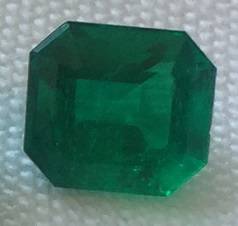
I would ask a very experienced lapidary like Jerry Newman. Email and send pics, unless you’re not in North America. I’m not sure who to send it to then.I did that too while in office and could not tell either. I now pulled out the original images and I see the chip was indeed there. I just did not notice it then.
Since it is not damage upon receiving, I will not return it. Yes, I do like it; I now need to decide what to do with the chip. Does anyone know if it can be polished out? Or once I have it set the chip would be almost invisible?
T L, Thanks a lot! I emailed Jerry today.I would ask a very experienced lapidary like Jerry Newman. Email and send pics, unless you’re not in North America. I’m not sure who to send it to then.
I’m guessing you don’t want the hassle and expense of sending a valuable gem back to Colombia to have George polish it out??? Otherwise I agree that they should polish it, However, that being said, the chip is not in a place that a prong will go, and it probably won’t be an issue if you set it. The most important thing is to tell your jeweler, and make sure that he/she is experienced with emeralds. Also tell the jeweler absolutely NO ultrasonic or stream cleaning on the stone whatsoever!!!T L, Thanks a lot! I emailed Jerry today.
I've been examining the stone without the loupe today. Unless I looked at the stone really close and deliberately looked for the chip, I would not notice it. What if I do not fix the chip and just have it set as it is? Is there any harm in the long run?